Is having a private label water purifier a good business? Understanding the water purifier contract manufacturing process and the ODM/OEM industry ecosystem.
Table of Contents
1.Global Water Purifier Market Analysis
2.Market research and customer segmentation
3.What are the different types of manufacturing methods? How does ODM differ from OEM?
4.How to assess the safety and reliability of manufacturing OEM factories
5.Cost and Profit Analysis of Establishing a Water Purifier Brand
6.In conclusion, is establishing a private brand of water purifiers truly a profitable business?
In recent years, with the increasing global demand for safe drinking water, the market demand for water purifier industry has also witnessed significant growth.
Many companies and investors who previously did not manufacture water purifiers are now entering this market one after another, and they are starting to establish their own water purifier brands.
But is this a profitable business decision?
In this article, we will share our years of experience in the water purifier industry, discussing the manufacturing process and industry ecosystem of water purifier OEM/ODM. We hope this will be helpful for businesses looking to enter this industry.
1.Global Water Purifier Market Analysis
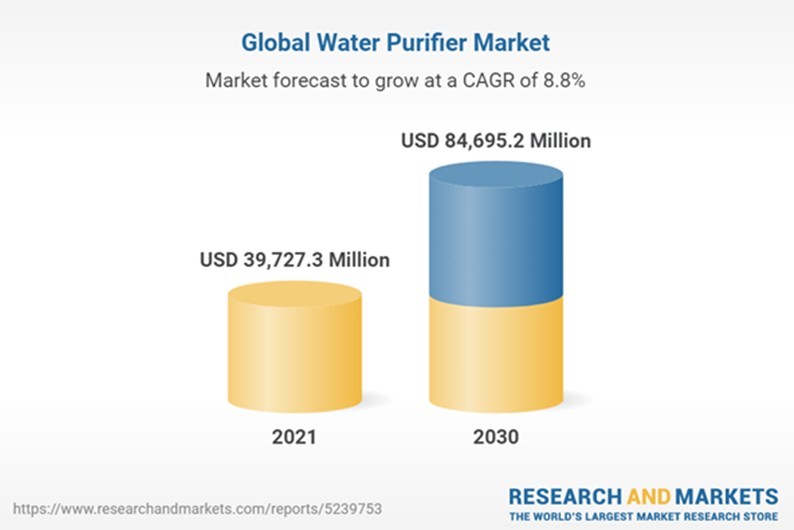
According to Research and Markets' Global Water Purifier Analysis Report for the years 2021-2030,(Global Water Purifier Market 2021-2030), The global water purifier market is projected to grow from $39.7 billion in 2021 to $84.7 billion in 2030, The annual compound growth rate is as high as 8.8%, with a total growth of 213%. This also means that even if you start investing in the water purifier industry now, you will still have significant growth potential in the next 7 years.
The growth of the water purifier market can be attributed to the following four reasons.
- The rise of emerging countries such as India,the Middle East,and Africa
- Scarcity of freshwater sources and declining global water quality.
- Increasing Awareness of Home Water Safety
- Increasing demand for industrial water purifiers.
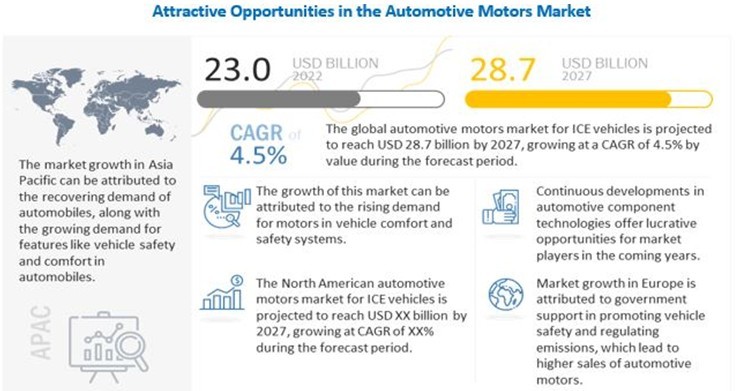
The global automotive market is estimated to reach approximately $230 billion in total market size in 2022. It is projected to grow to $287 billion by 2030, with a modest compound annual growth rate of only 4.5%,By referring to the chart below, we can gain a clearer understanding of the differences. This chart compares four different products: water purifiers, automobiles, smartphones, and smart TVs.
|
|
Market Size |
Market Size in 2030 |
Compound Annual Growth Rate (CAGR) |
Estimated Growth Rate |
|
Water Purifiers |
USD$39.7 billion (2021) |
USD$84.7 billion |
8.8% |
213% (2030年) |
|
Cars |
USD$23 billion (2022) |
USD$97.8 billion |
4.5% |
24.8% (2030年) |
|
Smartphones |
USD$52 billion (2022) |
USD$97.8 billion |
6.8% |
188% (2030年) |
|
Smart TVs |
USD$256.9 billion(2021) |
USD$379.1 billion |
5.9% |
148% (2028年) |
From the above table, it is easy to notice that compared to industries such as automobiles, smartphones, and smart TVs, the development of water purifiers is relatively slow-paced. Although water purification technology continues to make breakthroughs and innovations, the overall entry barrier for this industry is much lower than others. However, the growth potential is certainly worth paying attention to.
References:
https://www.researchandmarkets.com/reports/5239753/global-water-purifier-market-2021-2030
https://straitsresearch.com/report/automotive-motors-market
https://www.marketresearchfuture.com/reports/smartphone-market-8165
https://www.imarcgroup.com/smart-tv-market
After reviewing the above information, are you now interested in the water purifier market? Next, let's learn about the process and other considerations regarding water purifier OEM manufacturing.
2.Market research and customer segmentation
When establishing a new brand of water purifiers, thorough market research and precise customer segmentation are essential. We need to first understand the current status of competitors, local water quality, and water consumption habits in order to identify viable market segments to target.
We need to conduct a thorough analysis of our competitors' situation. This includes their product range, features, pricing, distribution channels, brand image, and more. We also need to understand their market strategies, including marketing tactics, target customer segments, and key sales locations. This analysis can help us identify our strengths and find areas where we can differentiate ourselves from the competition.
Certainly, it is essential to understand the water quality and water usage habits in your area. This involves researching the local water sources, water quality standards, water-related issues, and people's water usage habits.
For example, certain regions may commonly experience hard water issues, while others may face heavy metal contamination due to industrial pollution. In terms of water consumption habits, it is important for us to understand whether consumers prefer drinking water directly from a self-purifying water dispenser or if they tend to further boil the water. This information can help us design products more effectively to meet the actual needs of consumers.
If you want to have a deeper understanding of the water quality in your area, you can obtain a comprehensive analysis report from Global Water Quality& Analysis. In addition, the founder and general manager of Easywell Water Systems, Inc., a leading water purifier OEM manufacturer for over 30 years, has also compiled some practical water quality analysis data based on long-term experience. You can also refer to this information Global Water Quality.
Finally, based on the gathered information, we can identify potential market segments to target. Possible market segments include consumers with specific water quality concerns, consumers with a preference for high-end designs, or consumers inclined towards online shopping, among others. Once we identify the market segment to target, we need to determine how to position our brand within that segment, including product features, pricing, and marketing strategies.
By gaining a deep understanding of local water quality and water usage habits, we will be able to effectively guide the design of products that best meet consumer needs. This will transform our products from mere solutions to consumer problems into essential necessities in their daily lives.
3.What are the different types of manufacturing methods? How does ODM differ from OEM?
In the trend of globalization, the OEM (Original Equipment Manufacturer) model for water purifiers has become an essential approach for many businesses in terms of production and operations. The OEM model can be broadly classified into two types. :OEM(Original Equipment Manufacturing)and ODM(Original Design Manufacturing).
OEM:Original manufacturing production without product development and design is generally suitable for companies with strong R&D capabilities and mature product designs. In this model, the brand owner provides their own design and specifications to the manufacturer for production, while the manufacturer is responsible for the manufacturing and assembly of the products on behalf of the brand. This allows the company to focus more on product development and brand marketing, reducing production costs and risks.
ODM:Apart from OEM manufacturing, we also offer commissioned development and design services, making it suitable for companies that want to quickly enter the market, lack product development capabilities, or wish to save time and costs on product design.
There is another simpler and faster mode called OEM, also known as white labeling.
This is a highly efficient production model. In this model, the products manufactured by the producer or existing products are typically branded and sold by the buyer under their own brand. In other words, the manufacturer is responsible not only for the production of the product but also for its design, while the brand of the product belongs to the buyer. This model is often suitable for small businesses, distributors, or companies looking to expand their product lines.
Private labeling is highly advantageous for companies that desire to have their own products but are unable or unwilling to produce them themselves. Through private labeling, companies can quickly enter the market, saving costs and time on research and manufacturing, and instead focus on brand marketing and promotion.
Private labeling is highly advantageous for companies that desire to have their own products but are unable or unwilling to produce them themselves. Through private labeling, companies can quickly enter the market, saving costs and time on research and manufacturing, and instead focus on brand marketing and promotion.
Each approach has its advantages and disadvantages. The advantage of OEM is that it can protect and enhance the research and development capabilities and brand image of the company, and effectively control the quality and specifications of the products. The drawback is that it involves higher research and development risks, and if the manufacturer has insufficient capacity or encounters issues, it may lead to supply disruptions.
The advantages of ODM or OEM branding are the ability to enter the market quickly and save time and costs in research and production. This allows businesses to swiftly bring products to market and focus on brand marketing and sales.
4.How to evaluate the safety and reliability of a water purifier manufacturing contract factory:
In 2007, Mattel, Inc., the world's largest toy manufacturer, recalled over 19 million toys due to excessive lead content in the paint used by their Chinese suppliers. This not only caused a decline in Mattel's stock price but also inflicted severe damage to its brand reputation.
Source of information: https://e-info.org.tw/node/24990
In 2008, two manufacturing factories owned by Hotex Group, one of the world's largest toy OEM manufacturers based in Hong Kong, closed down. Despite Hotex Group's technological advancements and industry-leading scale, the company couldn't avoid the fate of closure due to the global economic slowdown and the impact of the financial crisis. Hotex Group primarily engaged in OEM manufacturing and selling toys, serving major toy companies worldwide such as Mattel and Hasbro. The closure event resulted in significant losses for their clients as well.
Source of information: Closure of He Jun Toy Factory
In 2013, it was discovered that Japanese food service provider Snow Brand Food used undisclosed meat as ingredients in their products, which was a result of poor quality control at their contracted factories. This incident led to a significant decline in the company's performance and inflicted substantial damage to its brand reputation.
Source of information: Japanese Case of Falsified Origin Certificates for Meat Products
Similar incidents are common in the global OEM market, and the water purifier industry, being part of the food industry, also prioritizes safety and reliability. With our years of experience, we will provide guidance to enterprises intending to enter the water purifier industry on how to evaluate the safety and reliability of manufacturing OEM water purifiers.
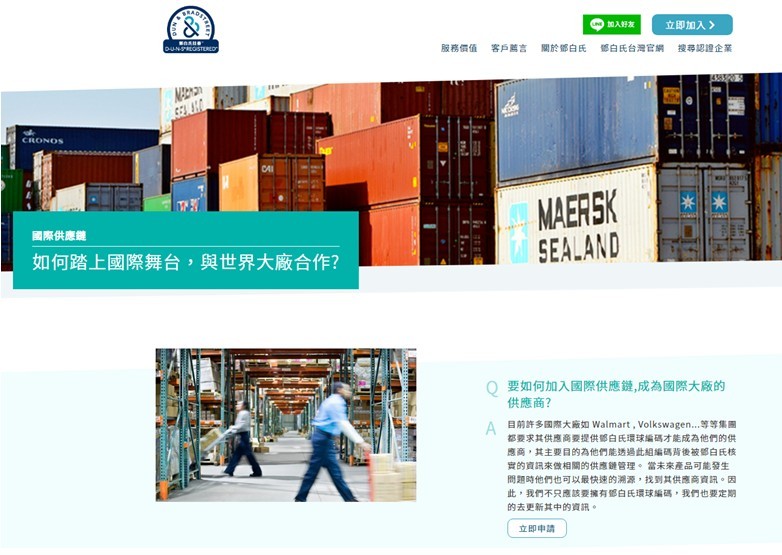
1. Refer to the corporate certification information of The Dun & Bradstreet Corporation
Dun & Bradstreet's DUNS (Data Universal Numbering System) is a globally recognized business identification standard. Through the DUNS number, companies can access the credit ratings of potential partners, which is crucial for assessing their financial stability and ability to fulfill contracts. Additionally, Dun & Bradstreet's supply chain risk management tools help businesses identify and monitor risks within their supply chains, including suppliers' operational status, financial health, and other factors that may impact the supply chain.
For multinational businesses, adhering to the legal requirements of different countries and regions poses a significant challenge. Dun & Bradstreet's solutions can help companies ensure that their supply chain activities comply with applicable laws and regulations.
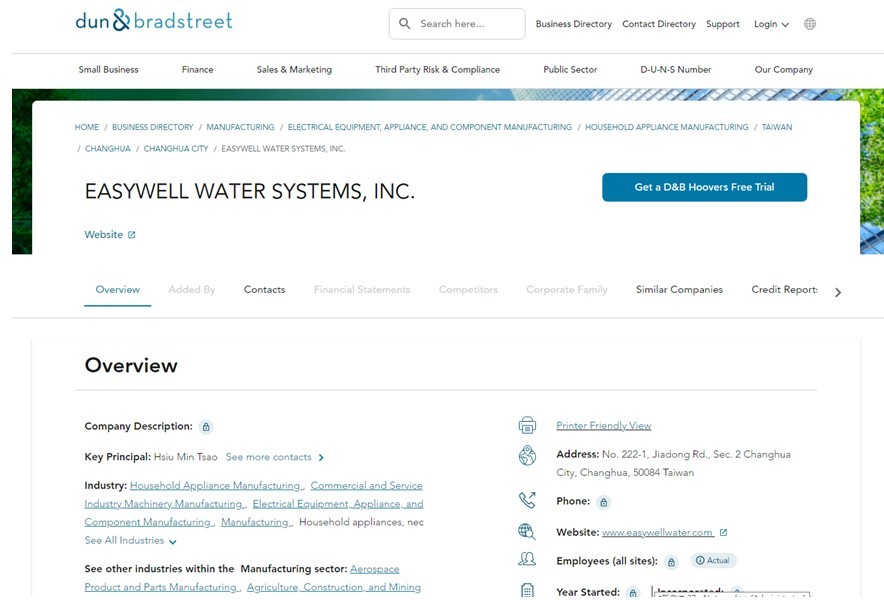
Enterprise Inquiry Website: https://www.dunsregistered.com/
2. Conduct on-site visits to the manufacturing plant and assess the working environment.
In general, international B2B outsourcing often begins with initial contact through email or international phone calls. When the brand client and the contract manufacturer reach further consensus, they proceed to the stage of on-site visits. During the on-site inspection, we need to pay attention to the following matters:
- Safety and Cleanliness:Water purifiers are part of an industry that emphasizes water quality. Examining the workplace safety and hygiene conditions of contract manufacturers is equivalent to examining the safety of their products. Generally, water purifier products are packaged as complete units when they leave the factory. Therefore, strict control over the on-site operating environment also affects the quality of the shipped products. It is important to pay special attention to whether the personnel involved in producing filter elements follow SOPs (Standard Operating Procedures) and wear masks, gloves, and hairnets to prevent the shedding of flakes or hair.
- Operator Work Attitude:The work attitude and behavior of operators can indirectly reflect the corporate culture and management level. Observing their level of focus, whether they have received professional training, and their interaction with supervisors can provide insights.
- Equipment and Technology:Understand whether the manufacturing equipment in the factory is automated and if it undergoes regular maintenance and upgrades. This information can be obtained from the factory through relevant records such as maintenance cards. This aspect can directly impact product quality and production efficiency.
- Inventory management:Assessing the factory's inventory management capabilities is crucial, especially in the water purification industry where it also affects post-production storage to prevent product deterioration and defects due to improper handling. This includes determining how to handle raw materials, waste materials, and finished products, with special attention given to the use of recycled plastics.
- Environmental Issues: Does the factory comply with relevant environmental laws and regulations? Are the factory's wastewater and air pollution control facilities complete?
- Local Regulations: If an OEM factory is located overseas, it is important to ensure that it complies with local labor laws, commercial regulations, and other applicable laws. As mentioned earlier, several well-known cases serve as cautionary tales of OEM factories being forced to close down due to issues related to labor law compliance
3. Would you be willing to provide 100% inspection of the water purification products for our initial collaboration?
- Quality Assurance:During the initial collaboration, the brand may not be fully familiar with the product quality and processes of the contract manufacturer. Conducting a comprehensive 100% inspection ensures that the products meet the expected quality standards and specification requirements, thus avoiding the shipment of non-compliant products.
- Building Trust: In the early stages of a business relationship, both parties may not have established enough trust. Full inspection allows the brand owner to have more confidence in the product quality of the contract manufacturer. It is also a way for the contract manufacturer to demonstrate its quality control capabilities to the brand owner. As trust is established through multiple collaborations, the product inspection rate can gradually be reduced based on actual costs, decreasing from 50% sampling inspection to 5% sampling inspection.
- Process Adjustment: When a new product line is commissioned for production for the first time, unforeseen issues may arise or process adjustments may be required. Full inspection allows for immediate detection of these issues and timely resolution before they escalate.
- Mitigate Brand Risk:Implementing a full inspection of all products from the contract manufacturer during initial collaboration helps prevent a large quantity of defective items from entering the market. This reduces the negative impact on brand reputation and sales resulting from quality issues.
4. Have you applied for international certification for water safety standards?
Major industrial countries worldwide have their own standards for drinking water safety. Assessing whether the contract manufacturer has relevant experience can significantly reduce potential issues in import, export, and sales. Here are several countries' inspection certifications provided for reference:

4-1 United States NSF, National Sanitation Foundation
The National Sanitation Foundation (NSF) is an organization based in the United States. Since August 6, 1998, all water pipes and plumbing fittings manufactured in the U.S. must comply with NSF Standard 61. This standard regulates the release of lead, other heavy metals, and organic substances into water when products are used. NSF not only established testing standards but also plays a role in providing impartial, independent, and reputable product inspection and certification services. When a product meets NSF standards through testing, manufacturers can apply for certification from NSF, and relevant products are issued certificates. In Taiwan, NSF certification for water filtration is highly valued by consumers.

4-2 United Kingdom WRAS
WRAS, which stands for Water Regulations Advisory Scheme, is a certification regulation in the water industry in the United Kingdom. It is developed based on the testing methods outlined in the British Standard BS6920. The scope of this certification covers all materials that come into contact with water and those that may be used in the production of related equipment, such as water pipes, faucets, valve components, rubber products, plastics, and so on.
Obtaining WRAS certification for a product or material signifies its compliance with the requirements for supplying water in the UK, and it is accepted in the UK, Commonwealth countries, and Southeast Asia, among other regions.
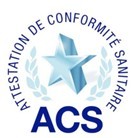
4-3 France ACS
ACS is a health certification agency in France, formally known as Attestation De Conformité Sanitaire. This agency conducts inspections of water equipment products based on the standards set by the French Standardization Association (AFNOR). In France, all products that come into contact with drinking water must obtain ACS certification in order to be legally sold.
![]()
4-4 German UBA and KTW-BWGL
The UBA (Umweltbundesamt, or German Federal Environment Agency) is responsible for regulating products related to drinking water for German residents and ensuring their hygiene and health conditions. To achieve this, the agency has introduced certification standards for drinking water materials and established the KTW (Kunststoffe und Trinkwasser) certification. The primary focus of KTW certification is on products that come into contact with drinking water, assessing whether any harmful substances may leach into the water during the product's usage or production process. The scope of testing includes cold water, warm water, and hot water, conducted by certified laboratories. Currently, all drinking water systems and their accessories sold in Germany must provide the KTW certificate, which has gained widespread recognition in Europe.
5. Please ask the contract manufacturer to provide financial statements and balance sheets.
Once there is a consensus between both parties to collaborate, sensitive questions can be raised concerning the contract manufacturer. Requesting financial statements and balance sheets, among other relevant documents, from the contract manufacturer ensures that they do not face financial crises. The previous mention of Hong Kong Hei Chun Toys Company serves as an example of how improper financial management can cause a chain reaction and impact the interests of the brand commissioning party.
Certainly, this part is considered highly confidential information for many contract manufacturers. Until both parties reach a consensus and sign a contract or make a deposit, many contract manufacturers are unwilling to provide such information. This is understandable, so this evaluation method is considered an extra credit question. Contract manufacturers who are willing to provide financial data give us greater confidence in their long-term viability compared to their peers.
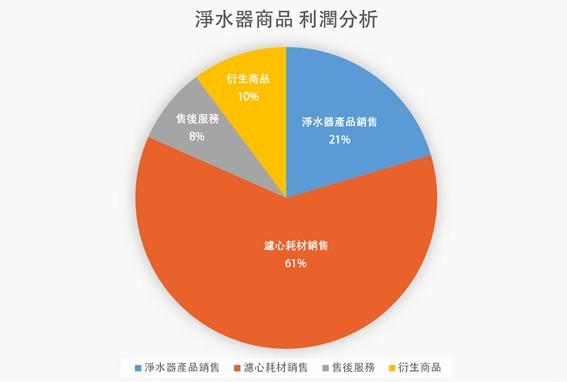
(The image above is for reference only. Actual conditions may vary depending on the product and business model.)
5. Cost and Profit Analysis of Establishing a Water Purifier Brand
Now, let's return to the main focus of this article after reviewing a lot of relevant knowledge about selecting an OEM factory for water purifiers. Is selling water purifiers really profitable? The following section will take you through an analysis of the cost structure and profit of water purifiers.
1.What is the profit margin of a water purifier?
Based on our own OEM experience of over 30 years, for most brand owners, the cost of the water purifier itself accounts for approximately 15% to 50% of the selling price. In other words, the profit margin ranges from as high as 85% to 50%. This is also why an increasing number of companies are entering this market. Compared to the electronics and 3C industries, the profit margin in the water purifier industry is significantly higher. Now, why is there such a substantial difference in profitability?
The main factors are "brand awareness" and "sales channels." Generally, well-known brands and private channels offer greater profit margins. For instance, brands that primarily use MLM as their sales channel often have more flexibility in pricing, resulting in higher profits. However, if a company simply acts as a white-label provider without establishing brand trust, the potential profit margin is typically only around 20%, excluding distribution costs mentioned earlier.
2.Does the profit model of water purifiers rely solely on product sales?
That's the beauty of water purifiers. If we take 3C electronics such as smartphones as an example, the brand's profit indeed primarily comes from selling the products themselves. However, for water purifiers, the profit goes beyond the initial sale. What's more important is the fantastic feature of "long-term recurring consumption" associated with water purification products.
Speaking of our RO reverse osmosis water purifier, with proper maintenance, its average lifespan is around 10 to 15 years. The annual cost for consumers to replace the filter cartridge ranges from NT$3,000 to NT$5,000. This means that by selling just one water purifier, we can generate additional revenue of NT$45,000 to NT$75,000 through customer repurchases of filter cartridges over a 15-year period. This exceeds the initial cost of the water purifier itself. Products with such advantages are truly rare in the market!
3.As a water purifier brand, what costs are involved?
This is also an area that companies entering this industry need to pay special attention to.
-
- Manufacturing Cost:This includes all expenses associated with the entire process from raw material procurement and production to product packaging. If a brand chooses to collaborate with a contract manufacturer, they will need to pay for the outsourcing fees.
- Certification Costs: To ensure product quality, brand owners may need to allocate a portion of their budget towards certification applications such as NSF, WRAS, ACS, and others. These certification costs can be quite substantial.
- Marketing Costs:When a brand wants to establish a presence in a fiercely competitive market, marketing and advertising expenses are often essential investments.
Brand Promotion: The cost of establishing and maintaining a brand image, which may involve creating and maintaining a company website, social media platforms, participating in industry exhibitions and conferences, etc. Additionally, brand owners may need to invest in packaging design, trademark registration, and other efforts to shape brand identity.
Advertising Promotion: Considering the current market trends, it can be said that investing in both online and traditional media advertising is almost essential.
Sales channel establishment: This includes the costs associated with establishing and maintaining a sales network, such as setting up physical stores, online shops, agency relationships, or distributor networks. For products like water purifiers, which are high-value and specialized, establishing a robust sales channel is crucial. - Service and Post-Sales Costs: After the product is sold, there will inevitably be costs associated with post-sales services, including providing excellent customer service and product repairs or replacements, which will incur certain expenses.
Therefore, we suggest that it would be best for companies with prior experience in market marketing and channel operations to consider operating water purifiers as a new product line. In the initial stage, they can leverage existing customers, reputation, channels, and service centers to establish a solid presence in the market.
6. Conclusion: Is establishing a proprietary water purifier brand really a good business?
From the above points, it can be observed that the market for water purifiers is growing larger and offers significant profit potential. What's remarkable is that water purifiers have maintained a strong presence in the consumer market for over 40 years and are still in a phase of high growth. Additionally, water purifiers also meet the four key principles of product selection.
The target customer base is wide.
Water, being the source of life and one of the three essential elements, is indispensable. Therefore, almost everyone is a potential customer for us. Compared to other consumer goods, the target customer base for water purifiers is evidently broad. With the ability to identify favorable entry points, establishing one's own water purification brand should not be difficult.
- High profitability and high returns.
Compared to consumer electronics or other product categories, water purifiers seem to have a fairly high profit margin. Profitability is the most important aspect of running a business, and choosing the right product lays a solid foundation for future profitability and long-term success. - Long product lifecycle.
Water purifier products have a lifespan ranging from a minimum of 2-3 years for top-tier models to a maximum of over 15 years. The greatest advantage of water purifier products lies in their extended product lifecycle, which translates to a longer duration of "continuous and uninterrupted profitability." - The product is simple and easy to understand.
Due to the presence of water purifiers in the household market for several decades, most consumers do not require special education on what a water purifier is. For many people, it has already become an essential necessity in their daily lives.
Based on the above conclusions, as long as we can instill confidence in consumers regarding our branded water purifiers and allocate reasonable brand marketing resources, we believe that water purifiers can become an essential and profitable asset for your company. Yes, establishing a proprietary brand for water purifiers is indeed a lucrative business opportunity.
For more information about OEM/ODM contract manufacturing of water purifiers, please refer to Easywell Water Systems, Inc.
Back